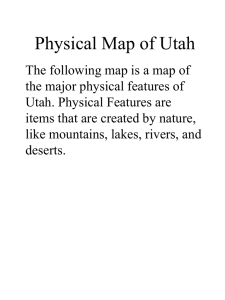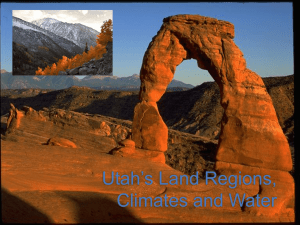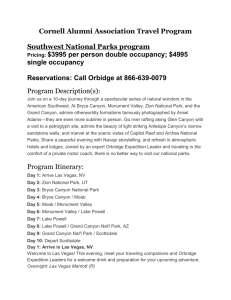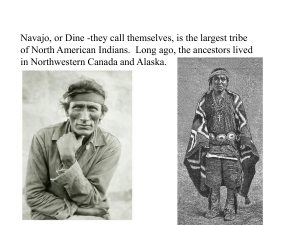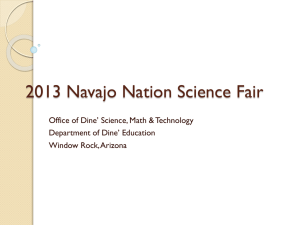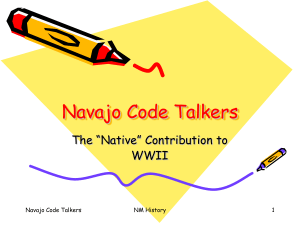Utah: 1920`s
advertisement
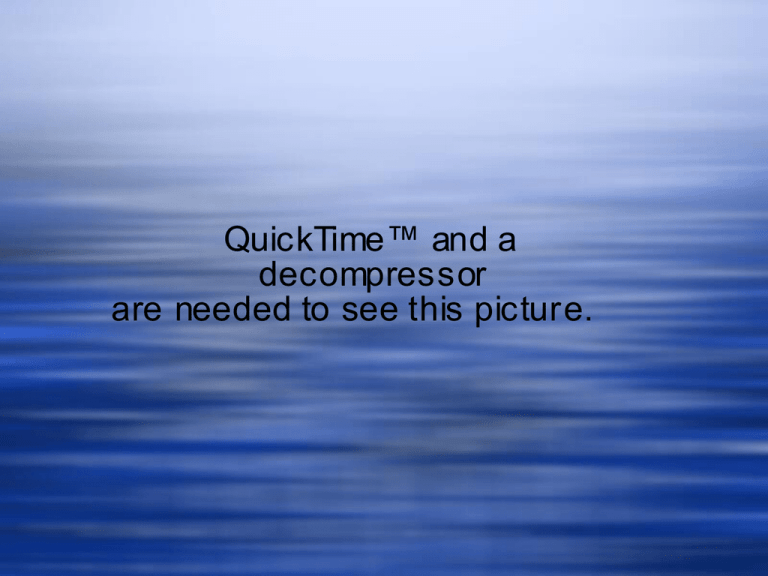
QuickTime™ and a decompressor are needed to see this picture. Utah: 1920’s - 1950’s National Forests, Parks and Monuments World War II: Topaz and Navajo Code Talkers National Forests, Parks, and Monuments Fun Facts Government wanted to protect natural land thus they created national parks and monuments. The first in the nation: Wyoming’s Yellowstone National Park Now, Utah has 13 parks and monuments The newest is the Grand Staircase-Escalante National Monument--1996 Fun Facts Continued Dinosaur National Monument: Earl Douglass, a geologist and fossil collector working in Pittsburgh, Pennsylvania, came to Utah each summer to explore the Uinta Basin. While here, he discovered a complete skeleton of a dinosaur exposed by erosion. Over the next 15 years, more than 700,000 pounds of dinosaur bones were removed from the site. Longest one: Diplodocus 84 feet long. Fun Facts Continued Utah’s first national monument: Natural Bridges National Monument--1908 Utah’s first national park: Zion National Park--1918 History of Lake Powell John Wesley Powell was the first person to fully explore and write about the canyons of the Colorado River. On the first of two trips down the Colorado, he found Glen Canyon. It was still unknown to many in the early 1950's when the Bureau of Reclamation proposed building a dam, there for the Colorado River Construction of the dam began in 1956. It was completed in 1962, but the lake did not completely fill until 1980. Lake Powell, which covered most of Glen Canyon, was named, ironically, after the man who had first written of the canyon's many charms. Effects on Glen Canyon Unserviceable prehistoric, historic, and religious sites of value lost. The Navajo lost at least two sacred places. The joining of the San Juan and the Colorado was a meeting place where two Navajo deities, embodied in theses rivers, met to create water children of the cloud and rain people. Now flooded over with Lake Powell Rainbow Bridge, an arch with a span of 278 feet. Said to be male and female holy beings who created clouds, rainbows, and moisture, this site, like the site above, is no longer used for worship. The waters of Lake Powell are eroding the foot of the rainbow. Even the glen in which John Wesley Powell stood in awe and for which the canyon and dam took its name, is covered beneath 500 feet of water. QuickTime™ and a decompressor are needed to see this picture. QuickTime™ and a decompressor are needed to see this picture. How can you preserve Utah’s national forests and other public lands? World War II in Utah Why the U.S. joined the war? While the U.S. was dealing with the Great Depression, countries in Europe and Asia were at war. Germany and Japan were both trying to take over other countries. America didn’t agree with this. Pearl Harbor in Hawaii was bombed and the U.S. declared war on Japan. A few days later, Germany and Italy declared war on the U.S. Topaz from the Textbook Navajo Code Talkers Both Japan and the U.S. used codes to keep secrets. What language do you think they used? At the start of the war, many Navajos from Utah and Arizona volunteered for the Marine Corps. They soon discovered the advantages of the Navajo language. It was different from any Asian or European language. A group of Navajos were sent to the Pacific to act as code talkers. After being trained, they used birds, fish, and other animals to serve as different military terms. The Japanese were so confused. Total of 350 Navajo Code Talkers

